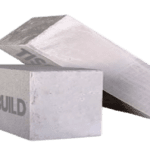Chandrayaan-3: A Historic Success for India's Space Program
On August 23, 2023, India’s Chandrayaan-3 spacecraft successfully landed on the Moon’s surface. This was India’s third attempt to soft-land on the Moon and the first time that India had landed on the Moon’s south pole.
Chandrayaan-3, the third installment in India’s lunar exploration series, has been a resounding success, further solidifying the country’s position in the global space community. This mission aimed to build upon the lessons learned from its predecessors, Chandrayaan-1 and Chandrayaan-2, both of which contributed valuable insights into the moon’s composition and its geological history.

The focal point of Chandrayaan-3 was the successful landing of a lunar rover on the moon’s surface. Drawing from the experiences of Chandrayaan-2’s Vikram lander, which encountered challenges during its descent in 2019, ISRO meticulously refined its technology and approach to ensure a flawless landing this time. The result was an exemplary showcase of innovation, determination, and engineering excellence.
The success of Chandrayaan-3 is a major milestone for India’s space program. It is a testament to the hard work and dedication of the scientists and engineers at the Indian Space Research Organisation (ISRO). It is also a source of pride for all Indians.
Chandrayaan-3 was launched on August 22, 2023, from the Satish Dhawan Space Centre in Sriharikota, India. The spacecraft consisted of a lander, a rover, and an orbiter.
The lander, named Vikram, was the first part of the spacecraft to reach the Moon. It successfully touched down on the Moon’s surface at 6:03 PM IST on August 23, 2023.
The rover, named Pragyan, was deployed from the lander on August 24, 2023. Pragyan is designed to explore the Moon’s surface for a period of one lunar day (about 14 Earth days). The rover, equipped with state-of-the-art scientific instruments, has already begun sending back a wealth of data, shedding light on previously unexplored facets of the moon’s geology, mineralogy, and environment. This trove of information promises to unravel mysteries about the moon’s origins, its volcanic history, and potential resources that could prove invaluable for future lunar missions, and even human colonization.

The orbiter, named Chandrayaan-3, will continue to orbit the Moon for a period of one year. The orbiter will study the Moon’s surface and atmosphere, and it will also help to communicate with the lander and rover.
Tata Steel, an Indian steel company, played a crucial role in facilitating the accomplishment of the Chandrayaan-3 lunar mission.
The success of Chandrayaan-3 is a major achievement for India’s space program. It is a testament to the hard work and dedication of the scientists and engineers at ISRO. It is also a source of pride for all Indians.
The success of Chandrayaan-3 will help to further India’s space exploration goals. It will also help to boost India’s technological and scientific prowess.












